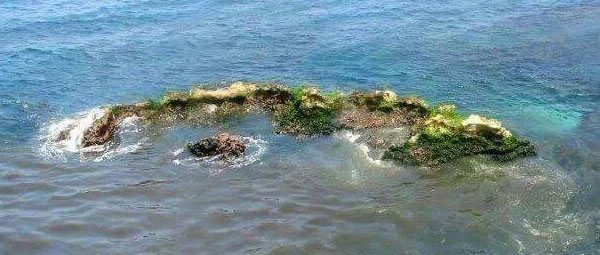 HABLANDO CUBANO: UN “SURREALISMO LINGUISTICO” EN EL MAPA DE NUESTRA ISLA.
HABLANDO CUBANO: UN “SURREALISMO LINGUISTICO” EN EL MAPA DE NUESTRA ISLA.
Si visitas algunas de las mejores paginas de nuestra historia encontraras una gran cantidad de nombres geograficos que tal parece en el hablar de los cubanos pertenecen a un particular surrealsmo lenguistico de los habitantes de nuestra isla.
He aqui algunos ejemplos…
En nuestra sierra madre, usted puede localizar el caserío ‘Maldita Sea’. Por Palma Soriano existe un ‘Ya Veremos’. En la provincia holguinera se conoce un ‘Salsipuedes’. Mientras, ‘Llega y Pon’ es topónimo en Matanzas. Y –mire usted qué cosa– tales nombres, a los vecinos de esos cuatro poblados, les parecen lo más natural del mundo.
Se sabe, por Ranchuelo, de cierto ‘Tumba la Burra’, emparentado con los cayos sagüeros ‘Tumba la Olla’.
Los guaimareños –no sé si por un trastorno en las papilas gustativas– no se inmutan ante la presencia de un Limón Dulce.
Por la frontera provincial Santiago-Guantánamo anda suelto un cavernícola, escapado de las tiras cómicas: ‘Trucutú’.
La ‘Víbora’ se denominan un barrio capitalino y una laguna pinareña, en un país donde los ofidios venenosos sólo se conocen a través de láminas, en los textos de Zoología. También disparatadamente ajenos se nos aparecen esos Manzanares del trópico (población y laguna en Placetas).
Un cayo avileño se llama ‘Felipe el Grande’. Y uno se siente tentado a pensar que el nombre recuerda los días en que el monarca allí se vacacionaba. Al respecto sólo existe una pequeña dificultad: el taciturno constructor de El Escorial jamás cruzó el charco atlántico.
Por Las Tunas fluye un temible río, donde se nos puede aparecer un ‘jigüe’, una madre de agua, un cagüeiro u otro representante de la teratología popular. Imagínese, tal vía de agua no se llamará por gusto ‘El Monstruo’.
En una punta del sur pinareño se conspira gastronómicamente contra los felinos: ‘Comegatos’. Mientras, en una ensenada del norte matancero, se le hinca el diente a algo menos paladeable: ‘Mascahierro’.
Un grupo de pinareños, y otro de Villaclara, decidieron fundar sendos poblados. Quizás para evitar disparates como los ya descritos votaron por no comprometerse, y en ambos casos escogieron el topónimo ‘Sin Nombre’.
Pero el asombro padre asalta al viajero en la vía que une a Banes con ‘Guardalavaca’. A la entrada de un poblado, el cartel muestra nítidamente el excrementicio nombre: ‘Retrete’.
Y haber escogido un topónimo tan demencial no se lo explican ni en el camagüeyano ‘Cayo Loquera’.
Todo ese llamativo resumen de nombres geo=graficos de nuestra isla nos hace más que unicos, tal como si fueramos parte de un ‘surrealismo linguistico’ en el hablar de los cubanos.
 SPEAKING CUBAN: A “LINGUISTIC SURREALISM” ON THE MAP OF OUR ISLAND.
SPEAKING CUBAN: A “LINGUISTIC SURREALISM” ON THE MAP OF OUR ISLAND.
If you visit some of the best pages in our history you will find a large number of geographical names that seem to belong to particular language surrealism of the inhabitants of our island in the talk of Cubans.
Here are some examples …
In our Sierra Madre, you can locate the ‘Maldita Sea’ farmhouse. For Palma Soriano, there is a ‘Ya Veremos’. In the Holguin province, a ‘Salsipuedes’ is known. Meanwhile, ‘Llega y Pon’ is a place name in Matanzas. And – look at what – such names, to the residents of those four towns, seem the most natural thing in the world.
It is known, by Ranchuelo, of a certain ‘Tumba la Burra’, related to the Sagüero keys ‘Tumba la Olla’.
The Guaimareños –I don’t know if due to a disorder in the taste buds– are unfazed by the presence of a Sweet Lemon.
A caveman is on the loose along the Santiago-Guantánamo provincial border, escaped from the comic strips: ‘Trucutú’.
The ‘Viper’ is called a capital neighborhood and a Pinar del Río lagoon, in a country where poisonous snakes are only known through plates, in Zoology texts. Those Manzanares of the tropics (town and lagoon in Placetas) also appear wildly alien to us.
An Avilanian key is called ‘Felipe el Grande’. And one is tempted to think that the name recalls the days when the monarch would vacation there. In this regard there is only one small difficulty: the taciturn builder of El Escorial never crossed the Atlantic pool.
A fearsome river flows through Las Tunas, where a ‘jigüe’, a mother of water, a cagüeiro, or another representative of popular teratology can appear to us. Imagine, such a waterway will not be called ‘The Monster’ for fun.
In a corner of southern Pinar del Río, there is a gastronomic conspiracy against felines: ‘Comegatos’. Meanwhile, in a cove in the north of Matanzas, he sinks his teeth to something less palatable: ‘Mascahierro’.
A group of people from Pinar del Río, and another from Villaclara, decided to found separate towns. Perhaps to avoid nonsense such as those already described, they voted not to commit themselves, and in both cases, they chose the toponym ‘Sin Nombre’.
But father astonishment assails the traveler on the road that connects Banes with ‘Guardalavaca’. At the entrance to a town, the sign clearly shows the excremental name: ‘Retrete’.
And having chosen such an insane place name is not explained to him even in the Camagüey ‘Cayo Loquera’.
All that striking summary of the geographic names of our island makes us more than unique as if we were part of a ‘linguistic surrealism’ in the talk of Cubans.
Agencies/ Wiki/ HablandoCubano/ Argelio Santiesteban/ Extractos/ Excerpts/ Internet Photos/ Arnoldo Varona/ www.TheCubanHistory.com
THE CUBAN HISTORY, HOLLYWOOD.









